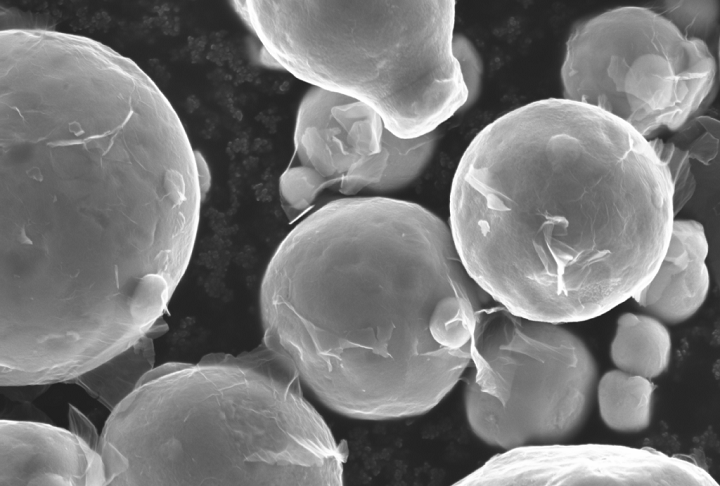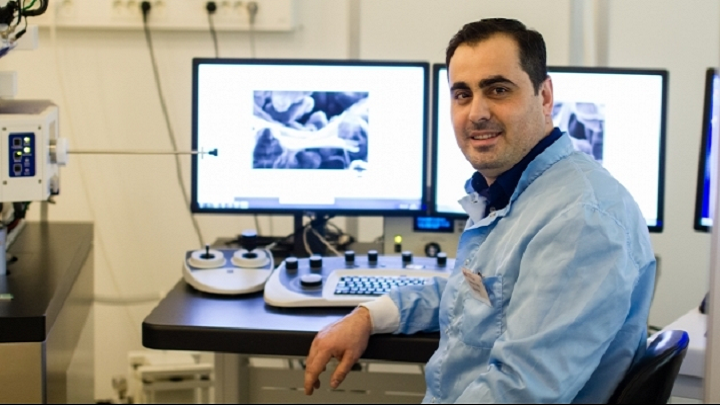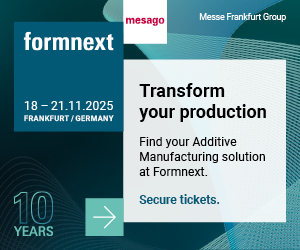Pure copper is a great heat and electricity conductor, making it a highly sought after metal in the 3D printing industry to use for applications such as heat exchangers and induction coils. Unfortunately, the material is not easy to use with common laser powder bed fusion (LPBF) AM technology. This is because its high reflectivity leads to low energy absorption, thus requiring higher energy output from the laser or electron beam. This can lead to splattering and other issues that can damage the printer or result in poor part quality. Copper alloy 3D printing can help allay these issues, but then decreases the material’s desired properties of heat and electrical conductivity.
Researchers at Uppsala University partnered with Swedish startup Graphmatech to find a solution to the problem: by using the company’s patented graphene technology to coat copper powder, the team was able to decrease the material’s reflectivity and achieve more dense 3D printed copper parts.
Graphmatech CEO Dr. Mamoun Taher said, “By modifying the surface of the copper powder using Graphmatech’s patented graphene technology, we successfully reduced the reflectance by up to 67%.”
Several years ago, Dr. Taher, who teaches in the university’s Department of Chemistry, developed a new form of graphene that can be used on a larger scale in the AM industry; this led to him partnering with serial entrepreneur Björn Lindh to found the privately held Swedish graphene materials technology company, and later to develop conductive, novel 3D printing filaments based on his own Aros Graphene material.
Graphene is a two-dimensional carbon material that’s far stronger than steel but extremely lightweight, and, just like copper, is great for conducting heat and electricity. By mixing the material with nanocomposites, it’s possible to improve 3D printable materials, which is just what the Uppsala research team decided to do in this instance.

Copper powder was coated using Graphmatech’s patented graphene technology. Image courtesy of Simon Tidén, Uppsala University.
Professor Ulf Jansson’s research group at the university’s Ångström Laboratory is leading the charge, as its PhD student Simon Tidén recently won a poster prize for the team’s work at the Swedish Arena for Additive Manufacturing of Metals Conference.
Professor Jansson stated, “The new process developed to coat metal powder with graphene opens up very interesting perspectives for the design of new materials in various applications.”
Coating the pure copper powder with the graphene had a good impact on the density of the 3D printed parts, lowering both their reflectivity and porosity. The material was actually able to increase the “processability” of the powder, as well as the final properties of the parts.
With this victory in hand, Graphmatech is now working to actively scale up the technology.
Dr. Taher concluded, “This 3D printable hybrid material has the potential to add value in a range of sectors such as e-mobility, electronics and defence.”
(Source/Images: Graphmatech)
Subscribe to Our Email Newsletter
Stay up-to-date on all the latest news from the 3D printing industry and receive information and offers from third party vendors.
Print Services
Upload your 3D Models and get them printed quickly and efficiently.
You May Also Like
Seek Success In Additive: Strawberry Fields
The paths to success in additive may appear limited, but this is only because of so much strategic replication and so many copycat businesses. One potentially lucrative path to additive...
Seeking Success in Additive: You Should Probably Have a Strategy
A lot of companies have a plan, an idea, some semi-coherent tale, or maybe even an outline of a business. They have a deck of PowerPoints they once sold to...
Let’s Make It Easier for People to Give Us Money
If you’re trying to sell expensive boxes, then the current market and global uncertainty will make this difficult for you. But, additionally, you are making it difficult for yourself as...
Satellite RF: Seek Success in Owning Additive Applications
If you had started 30 years ago, you could have become a major original equipment manufacturer (OEM). And if you entered six years ago, with $50 million, your current course...






































